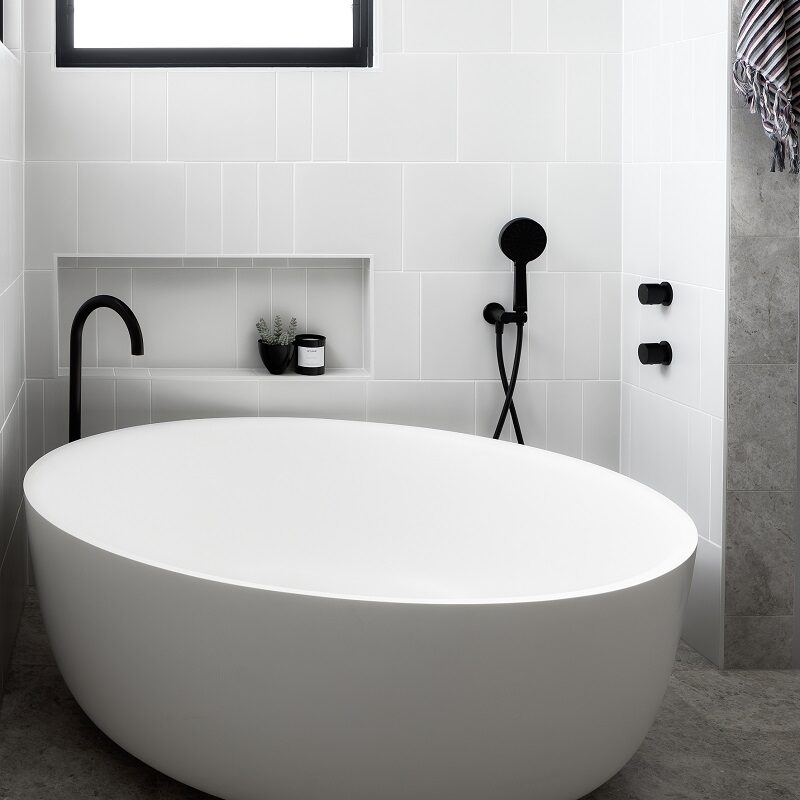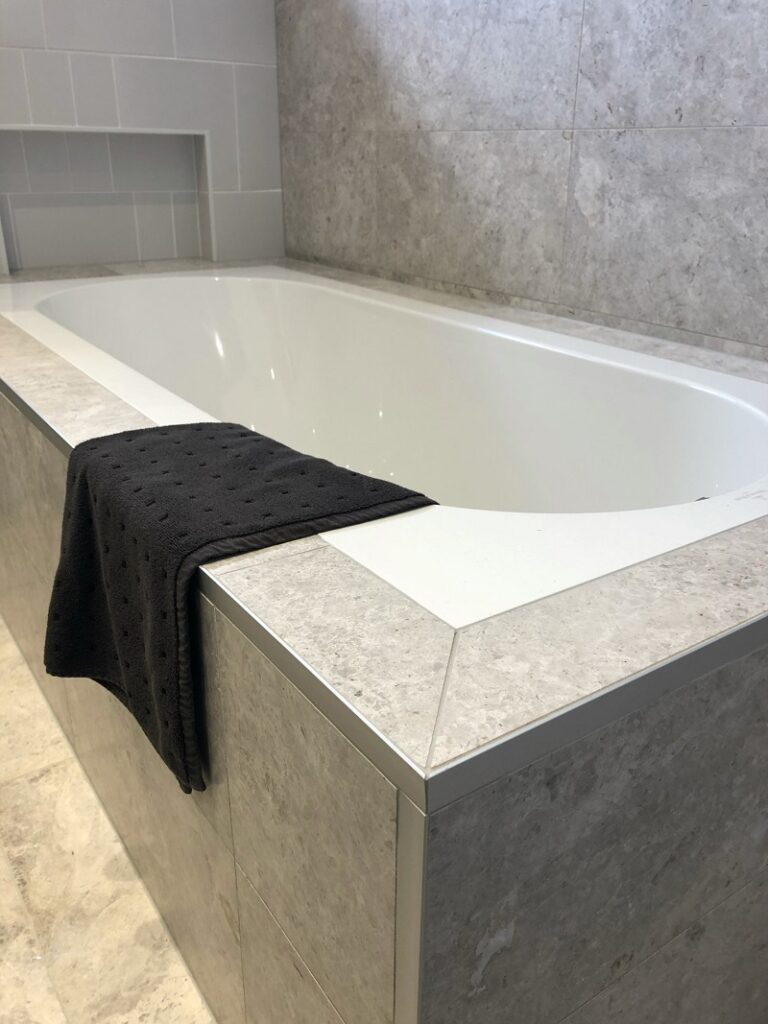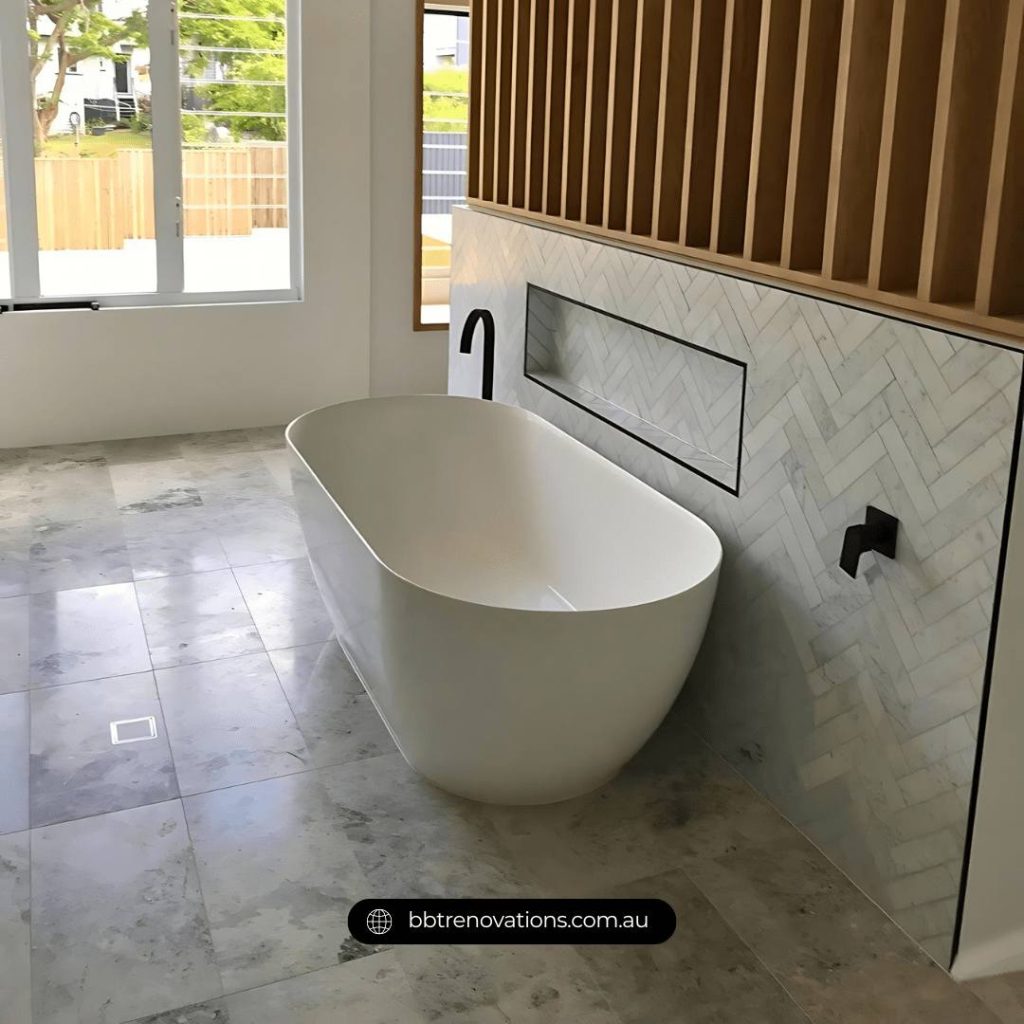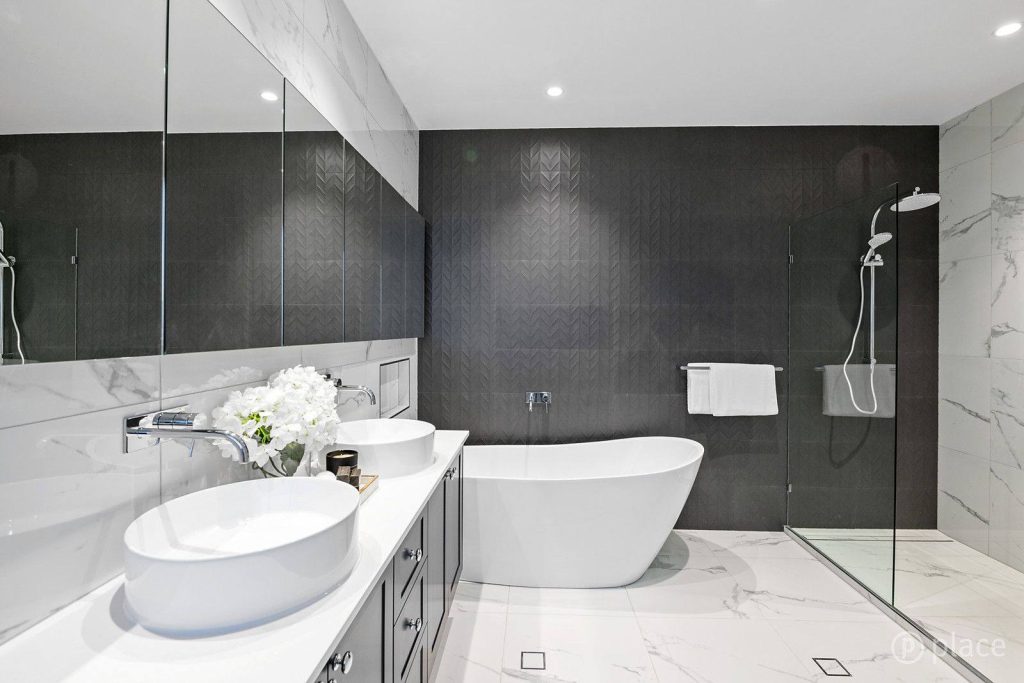Embarking on the journey of selecting a new bathtub can be both thrilling and delightful. With a plethora of options available in the contemporary market, it is entirely natural to feel a sense of overwhelm initially. However, there’s no need to be anxious. You are well on your way to discovering the ideal enhancement for your bathroom.
The selection of your perfect bathtub is heavily influenced by key elements such as your bathroom dimensions, budget, and your unique personal style. Are you in search of a deep soak to achieve ultimate relaxation or do you prefer a quick splash for efficiency?
Perhaps you dream of creating a lavish spa-like atmosphere or are you leaning towards something more practical and functional?
Your bathtub selection has the potential to significantly impact your ability to unwind and rejuvenate. A thoughtfully chosen bathtub can transform your bathroom into a tranquil oasis, providing an ideal retreat from the pressures of everyday life. Let’s delve into some popular bathtub types to assist you in finding your perfect match.

Key Considerations for Choosing Your Ideal Bathtub
Selecting the right bathtub can greatly enhance your overall bathroom experience. It is vital to contemplate numerous factors, including materials, dimensions, styles, and the installation process to ensure a perfect fit for your individual space.
In-Depth Exploration of Bathtub Materials and Their Unique Benefits
Bathtubs are crafted from a variety of materials, each presenting distinct advantages and characteristics. Below are some commonly used options:
- Acrylic: This lightweight material not only offers easy maintenance but also excels at retaining heat, ensuring you can enjoy long, soothing baths.
- Cast iron: Renowned for its timeless aesthetic and remarkable durability, cast iron bathtubs are capable of lasting a lifetime with appropriate care.
- Fiberglass: A cost-effective choice, this lightweight option is simple to handle, although it may not provide the same longevity as other materials.
- Stone: Known for its luxurious appeal and unique characteristics, stone bathtubs often come at a higher price point.
Each material contributes a distinct appearance and tactile sensation. Take the time to reflect on which qualities are most important to you when making your selection.

Understanding Bathtub Dimensions to Suit Your Unique Space
Bathtubs are available in a diverse range of sizes to accommodate various spaces and user requirements. When determining the suitable size for your new bathtub, consider the following key factors:
- Dimensions of your bathroom – Assess the space you have available for a bathtub installation.
- Height of potential users – Take into account the height of individuals who will be using the bathtub.
- Desired space for comfort – Do you prefer additional room to stretch out and enjoy your bathing experience?
Typically, standard bathtubs measure around 150 cm in length and 75 cm in width. However, options are available in both smaller and larger sizes. Be sure to measure your available space accurately before finalising your purchase to avoid any fitting complications.
Exploring the Variety of Bathtub Styles and Shapes Available
There exists a vast array of bathtub styles tailored to cater to diverse preferences and aesthetics. Here are some popular choices:
- Freestanding: This independent design often brings a touch of elegance and sophistication to any bathroom.
- Alcove: Specifically designed to fit snugly between three walls, making them ideal for compact spaces.
- Corner: These bathtubs are engineered to fit seamlessly into a corner, maximising space efficiency.
- Drop-in: These tubs are installed within a frame or deck, offering a sleek and seamless appearance.
The shape of your bathtub can significantly influence the overall aesthetic and user experience of your bathroom. Oval tubs provide added comfort, while square designs can impart a modern and minimalist vibe. Consider what best aligns with your bathroom's overall style and décor.

Evaluating Different Bathtub Installation Methods for Optimal Results
The installation method you select for your bathtub is essential, as it can affect both the overall cost and the complexity of the installation process. Below are some common installation types:
- Built-in: Designed to fit seamlessly within a designated space in your bathroom for a cohesive look.
- Freestanding: This type requires no additional support, allowing for flexible placement throughout your space.
- Walk-in: Equipped with a door for easy access, making it ideal for individuals with mobility challenges or disabilities.
Consider the needs of those who will be using the bathtub along with the level of installation effort you are willing to undertake. Some models are easier to install than others, and in certain instances, you may require professional assistance to ensure proper installation.
Critical Considerations Beyond Basic Bathtub Selection
When it comes to choosing the right bathtub, there are numerous elements to contemplate beyond mere size and type. Aspects such as comfort, style, and maintenance requirements play vital roles in your overall decision-making process. Let’s take a deeper look at some key factors that warrant your attention.
Enhancing Bathroom Comfort with Thoughtful Features
Comfort is a crucial factor that can vastly improve your bathing experience. Seek out bathtubs that showcase ergonomic designs which provide essential support for your body. Certain models are equipped with built-in headrests or armrests that can dramatically enhance your relaxation experience while soaking.
Moreover, textured surfaces can improve safety by minimising the risk of slips during bathing. Numerous bathtubs are now available with massage jets that provide a spa-like experience, assisting in alleviating muscle tension and promoting better circulation throughout your body.
Temperature control is another significant comfort feature worth considering. Premium bathtubs may come with integrated heating systems that maintain your water temperature for extended periods, allowing you to indulge in a longer, more luxurious soak without the hassle of refilling with hot water.
Choosing the Ideal Colour and Design for Your Bathtub
Your bathtub can serve as a striking focal point within your bathroom. While classic white remains a timeless option that complements most décors, don’t shy away from exploring alternative colours. Subtle shades of grey, beige, or even vibrant hues can infuse personality and charm into your space.
Consider the overall aesthetic of your bathroom when making your selection. A sleek, modern bathtub may clash with a traditional setting. Freestanding tubs often act as captivating centrepieces, while built-in options can blend seamlessly with your bathroom's overall design.
The choice of material is equally important, as it significantly impacts both the visual appeal and tactile experience of your bathtub. Glossy acrylic tubs are favoured for their ease of maintenance, while stone or concrete tubs offer a distinct, luxurious aesthetic. Additionally, metal tubs, such as those made from copper, can introduce a vintage charm to your bathroom.
Efficient Maintenance and Cleaning of Your Bathtub
Opting for a bathtub that is easy to maintain can simplify your daily routine and save valuable time. Different materials exhibit varying levels of resistance to stains and scratches. Acrylic and fibreglass tubs are known for their low-maintenance properties, requiring only simple wipe-downs to stay clean and in good condition.
While cast iron tubs featuring enamel coatings are renowned for their durability, they can be vulnerable to chipping. If any damage occurs, it is crucial to repair it promptly to avert rust formation. Natural stone tubs may necessitate periodic sealing to shield against stains and enhance their longevity.
Furthermore, reflect on the shape of your bathtub in relation to cleaning practicality. Tubs with complex corners or textured surfaces can present challenges during cleaning. In contrast, smooth and simple designs are often easier to maintain. Some modern models even feature self-cleaning capabilities, providing significant time-saving advantages.
Connect with Brisbane’s Leading Bathroom Renovation Specialists
If you are prepared to discover your perfect bathtub or have any queries regarding your upcoming bathroom renovation project, please feel free to contact us today.
Thorough Answers to Commonly Asked Questions About Bathtubs
Choosing the right bathtub necessitates thoughtful consideration of various elements such as size, material, and design. The following frequently asked questions can serve as a beneficial guide during your decision-making journey.
What Is the Best Way to Accurately Measure My New Bathtub Size?
Accurately measuring your bathroom space is paramount. Consider who will utilise the bathtub and how. A standard bathtub typically measures about 1.5 metres in length, but there are options available in both shorter and longer configurations. Always ensure to check your doorways and hallways to verify that the bathtub can be manoeuvred through them without any difficulties.

What Are the Primary Benefits of Choosing a Porcelain Bathtub Over a Plastic One?
Porcelain bathtubs are celebrated for their remarkable durability and resistance to scratches, ensuring they retain heat for prolonged periods while providing a solid and luxurious feel. In comparison, plastic tubs are lighter and generally more economical. They are easier to install and come in a wider variety of shapes and designs. Your final choice will depend on your budget and specific requirements.
Which Bathtub Material Is Most Suitable for My Renovation?
Acrylic is a standout choice for renovations due to its lightweight nature, warmth to the touch, and ease of cleaning. If you desire a classic aesthetic and are not concerned about weight, cast iron could be an excellent alternative. Fibreglass is a budget-friendly option, although it may not be as durable. Consider your style preferences, budget, and the expected longevity of the bathtub when making your selection.
What Bathtub Material Should I Choose If I Have Hard Water at Home?
If hard water is an issue in your household, it is advisable to select non-porous materials such as acrylic and porcelain, as they resist stains and are easier to maintain. Avoid materials like copper or natural stone, which may react unfavourably with hard water and become stained over time.
Acrylic vs Fibreglass Tubs: Which Option Should I Choose?
Acrylic tubs generally exhibit superior durability and excel in heat retention compared to their fibreglass counterparts. They also resist scratches and chips more effectively. Conversely, fibreglass tubs are lighter and often more budget-friendly, making them an appealing option for those seeking cost-effectiveness. If durability and longevity are your primary concerns, investing in an acrylic tub may prove worthwhile.
What Essential Information Should I Know About Alcove Bathtubs Before Purchasing?
Alcove bathtubs are specifically designed to fit snugly between three walls, making them an outstanding choice for compact bathrooms. They typically offer easier installation than freestanding models. Be sure to measure your available space accurately. Additionally, consider whether you desire a shower-tub combination and check if you require a left-hand or right-hand drain for proper installation.
What sort of bathtub should I choose? A quick guide to finding your perfect soak
The Article: Choosing the Right Bathtub: A Quick Guide to Your Perfect Soak first appeared on https://writebuff.com
The Article Bathtub Buying Guide: Find Your Perfect Soak Today Was Found On https://limitsofstrategy.com

